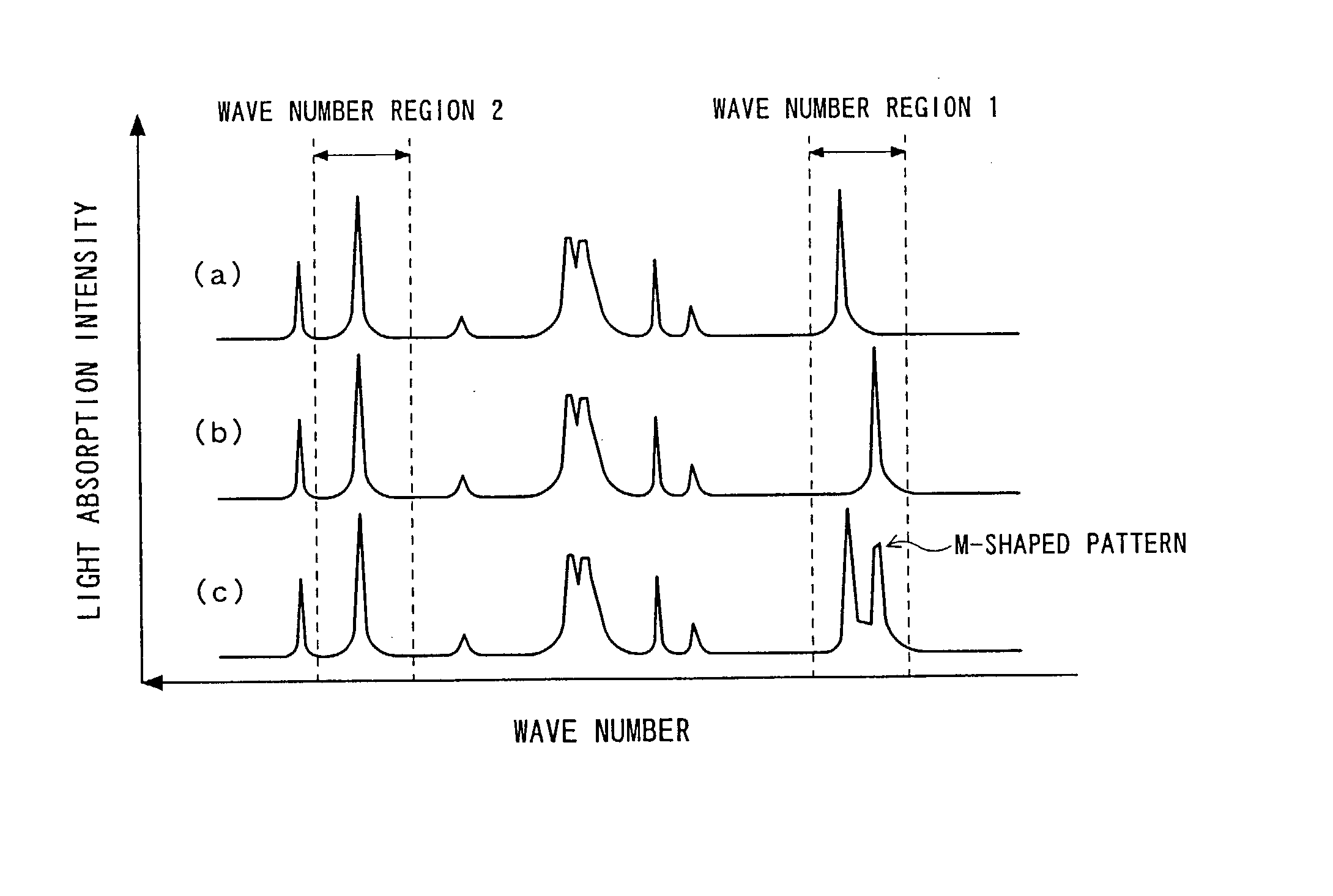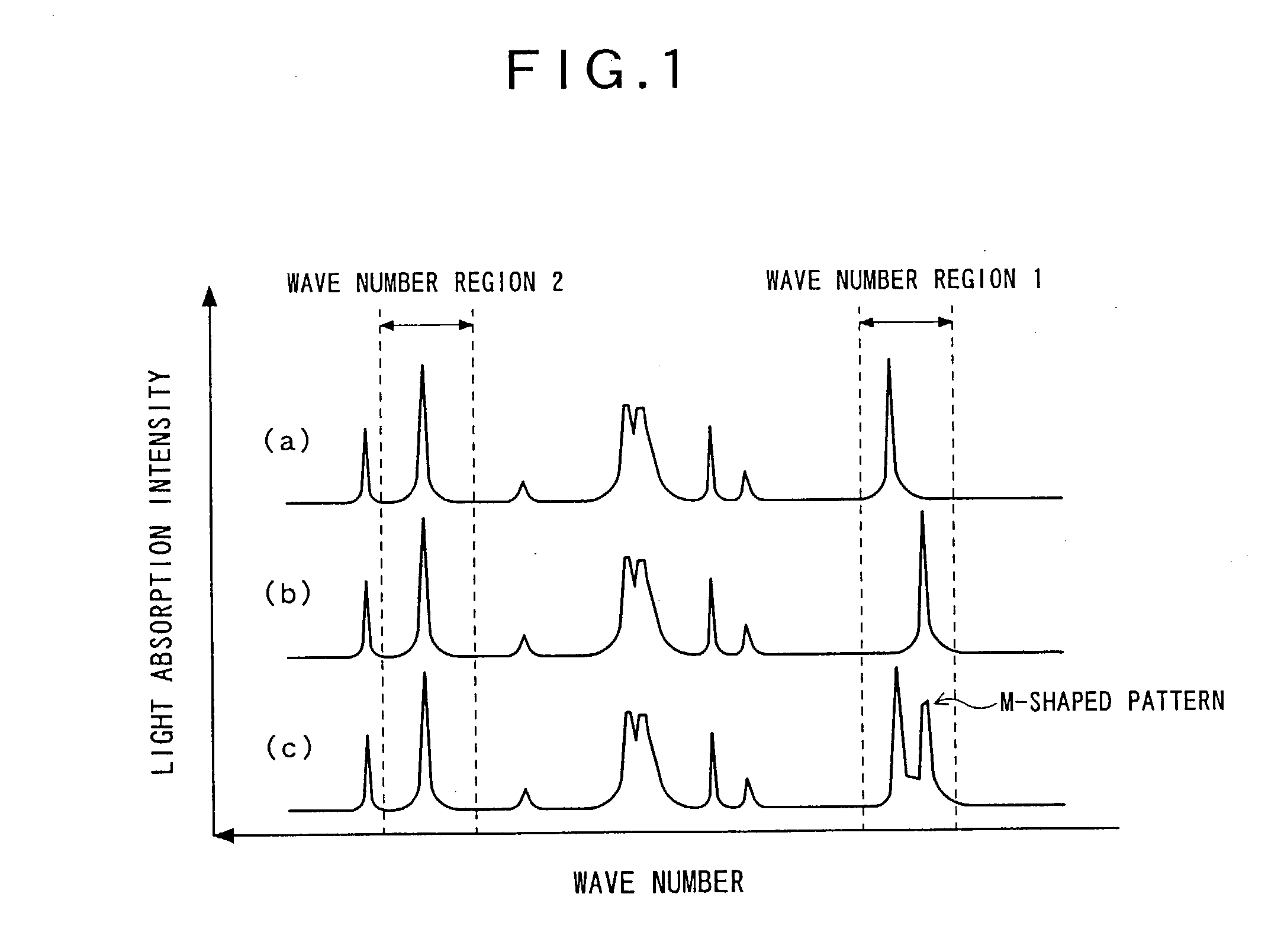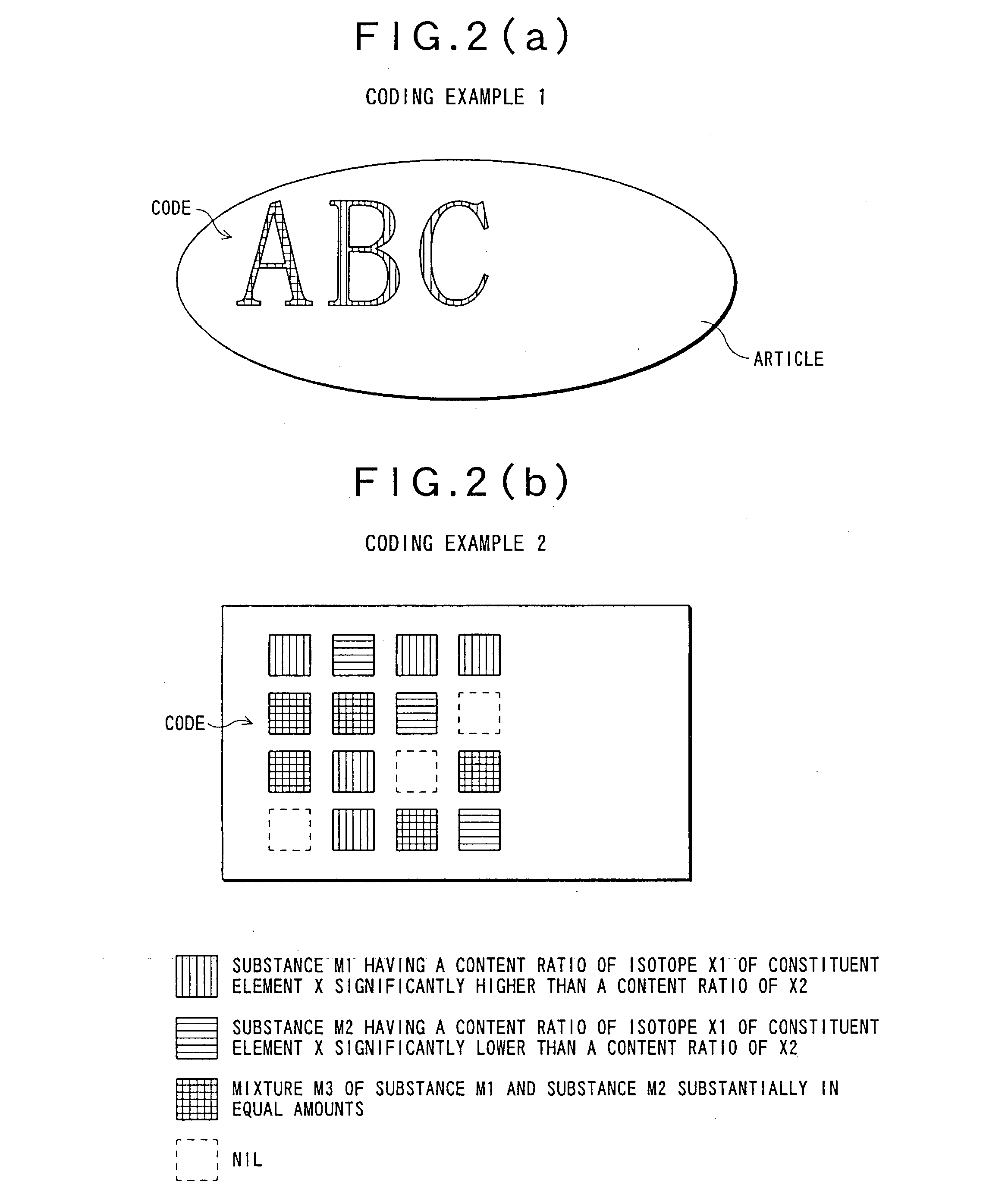Nondestructive reading method for isotopic label
a reading method and isotopic technology, applied in the field of anti-counterfeit methods of articles, can solve the problems of presenting serious usefulness, limiting the application range, and difficulty in the practical use of icpms
- Summary
- Abstract
- Description
- Claims
- Application Information
AI Technical Summary
Problems solved by technology
Method used
Image
Examples
example 1
[0072] This example is one wherein sodium formate (HCOONa) was used as substance M constituting an isotopic label. Among the constituent elements of sodium formate, carbon C has two types of stable isotopes of .sup.12C and .sup.13C. By synthesizing "substances wherein the content ratios of stable isotopes of constituent elements other than carbon are equal to the natural isotopic abundance ratios, respectively, and the content ratios of the stable isotopes alone of carbon are appropriately controlled", sodium formate substances corresponding to the substances M1.about.M3, respectively, can be obtained. Sodium formate having a stable isotope ratio corresponding to the natural isotopic abundance ratio was used as a substance corresponding to substance M1. Artificially synthesized sodium formate wherein a content ratio of .sup.12C is at 1% was provided as one corresponding to substance M2, i.e. sodium formate wherein the content ratio of .sup.12C is significantly lower than the content...
example 2
[0076] Two types of sodium formate, each controlled in a content ratio of stable isotopes, (both were solid at normal temperature and normal pressure and were used as a powder in this experiment), and a mixture of the two types of sodium formate were, respectively, subjected to nondestructive measurement of a vibration spectrum in near infrared region by using an infrared absorption method with an acousto-optical tunable filter. FIG. 8 is a view showing the results of the measurement wherein the vertical axis shows light absorption intensity (arbitrary unit=A.U.) and the horizontal axis shows wavelength. In FIG. 8, (a) indicates a light absorption spectrum of sodium formate (represented by DCOONa) wherein the content ratio of stable isotopes of hydrogen was controlled to be .sup.1H:.sup.2H (.sup.2H=D)=1:99, (b) indicates a light absorption spectrum of sodium formate (represented by H.sup.13COONa) wherein the content ratio of stable isotopes of carbon was controlled to be .sup.12C:.s...
example 3
[0077] Sodium formate wherein the content ratio of stable isotopes of hydrogen was controlled, sodium formate wherein the content ratio of stable isotopes of carbon was controlled (both were solid at normal temperature and normal pressure and were used as a powder in this experiment, respectively), and a mixture of these two types of sodium formate were each subjected to nondestructive measurement of a vibration spectrum by using a Raman scattering method. FIG. 9 is a view showing the results wherein the vertical axis shows scattered light intensity (arbitrary unit=A.U.) and horizontal axis shows Raman shift. In FIG. 9, (a) indicates the scattered light intensity of sodium formate (indicated by natHCOONa) with the natural isotopic abundance ratios, (b) indicates a scattered light intensity of sodium formate (indicated by DCOONa) wherein the content ratio of stable isotopes of hydrogen is controlled such that .sup.1H:.sup.2H (.sup.2H=D)=1:99, (c) indicates the scattered light intensi...
PUM
 Login to View More
Login to View More Abstract
Description
Claims
Application Information
 Login to View More
Login to View More - R&D
- Intellectual Property
- Life Sciences
- Materials
- Tech Scout
- Unparalleled Data Quality
- Higher Quality Content
- 60% Fewer Hallucinations
Browse by: Latest US Patents, China's latest patents, Technical Efficacy Thesaurus, Application Domain, Technology Topic, Popular Technical Reports.
© 2025 PatSnap. All rights reserved.Legal|Privacy policy|Modern Slavery Act Transparency Statement|Sitemap|About US| Contact US: help@patsnap.com



